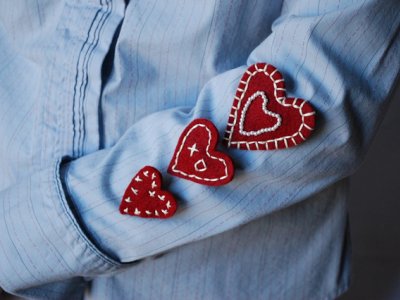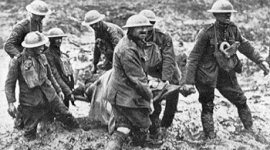
HEART ON SLEEVE
What should we make of the trend for visibly displaying our ethical credentials?
Writing in Prospect (October 2014) under the title ‘If I ruled the world’ novelist Howard Jacobson, easing into the role of dictator, acidly decreed that ‘there will simply be no wearing of T-shirts with words on them, full stop’. Someone must have forgotten to tell Harriet Harman, who weeks later chose to display the Fawcett Society’s This is what a feminist looks like top at Prime Minister’s Question Time in a bid to embarrass David Cameron, who alone of the main party leaders had decided not to wear one.
Before the campaign found full stride, it was knocked horribly off balance by the suggestion that the garments had been made in a Mauritian sweatshop by women paid 62p an hour.
Perhaps the moral is that it’s best not to use the fashion industry as a medium for expressing a feminist position, given its perceived role in making women feel bad about their bodies, not to mention its exploitation of cheap labour. But what should we make of the growth in ethical exhibition in our febrile climate of self-expression?
Earlier in 2014, hashtag activism reached a new level in the campaign to release the schoolgirls captured by the Islamist insurgency group Boko Haram in Nigeria (#bringbackourgirls). The sight of Michelle Obama holding a placard to this effect drew criticism for its shallow pretension, leaving some to wonder if the President’s global reach had been reduced to this.
Perhaps we are all trying to find our feet in a new era of digital campaigns. It is understandable that some locate a hint of narcissism in those who so publicly display their ethical credentials. The new digital reach enables hundred, thousands – in Michelle Obama’s case, millions – to see not just the message but how much you care about being seen to support the message. The risk is that such gestures become moral selfies, where the desire to show to others life’s injustices is subordinated to the wish to share images of yourself caring about the world. Few can claim never to have succumbed to this, whether it is the subtle lapel badge, the rubber wristband or the right-on T-shirt. Yet only a handful would claim the wearing of a poppy is a demonstration of moral superiority; if this is seen as a genuine desire to remember the war dead, why should other causes automatically be subject to a different and more suspicious level of scrutiny?
The Church has always used visible symbols to demonstrate its allegiances: the dove, the cross, the fish. They are indicative of a spiritual commitment but are compromised – like other causes – when the life of the one exhibiting the symbol fails to match up to the standard it sets. As St. Francis said: preach the Gospel at all times and when necessary use words. Howard Jacobson went further in his column, suggesting that ‘language is too sacred to be thrown away on a garment’.
Perhaps there needs to be a cost, or the risk of a cost, in making visible demonstration of a moral cause. One of the most moving images of 2014 was located in Baghdad. As the sadistic Isis scythed its bloody way through the Middle East, it daubed the letter ‘N’ (for Nazarene) on the doors of Christian households, marking them for punishment. That summer, Sunni and Shia Baghdadis marched through the ancient capital wearing T-shirts with one letter inscribed: N. Who can put a price on the dignity and humanity of that kind of identification?
POPULAR ARTICLES

Obama's Covert Wars
The use of drones is going to change warfare out of all recognition in the next decades.

Through A Glass Starkly
Images of traumatic incidents caught on mobile phone can be put to remarkable effect.

What Are British Values?
Is there a British identity and if so, what has shaped the values and institutions that form it?


